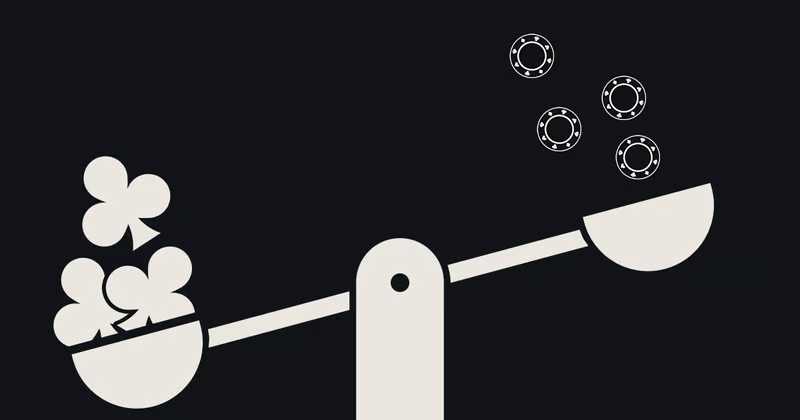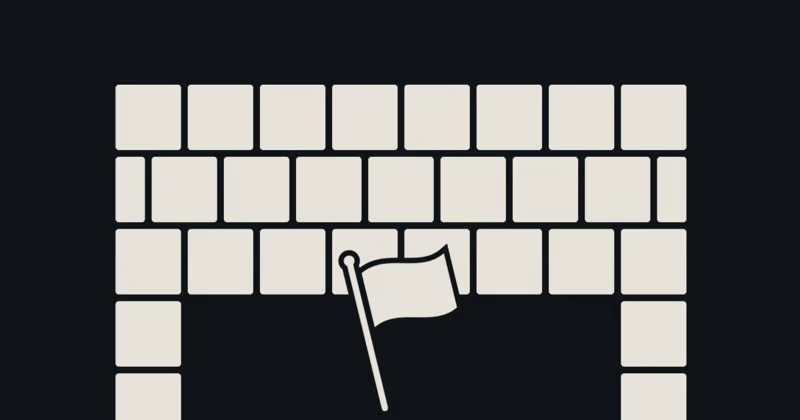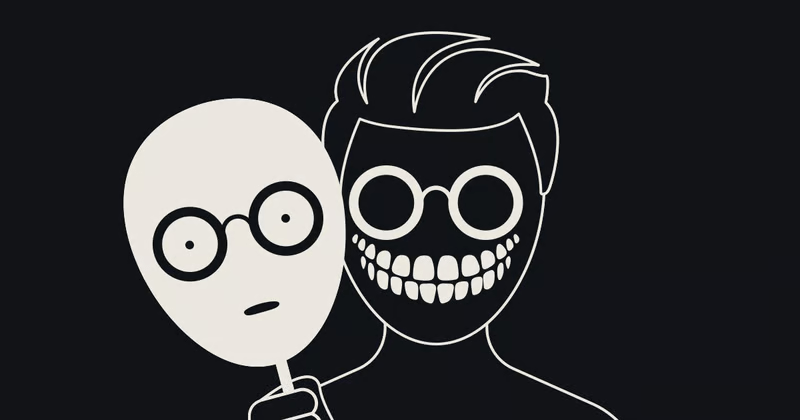Lately, Phil has started releasing videos on YouTube less often, but he has started writing very informative letters to fans with lessons on poker strategy. At the time of publication of this material, there are already 13 of them – we have selected and translated the three most striking ones.
What you may not understand about board textures

Anyone reading this most likely knows that the flop is different from the flop . You will probably say that the first one is more convenient for bluffing, and you know that the sizing on these boards will be different. For each of them, you have quick, habitual solutions... And these solutions are not always correct.
There is such a field of science – “heuristics”. Explores thinking techniques that simplify problem solving in the face of limited information. Whether you like it or not, your brain has long created many patterns, including for poker. For example, if your opponent bet the pot on the flop , you know that with you won't fold it ever. You can calculate the odds and EV, but this is not necessary – it is already obvious that there is no folding. And every experienced player has many such instant answers.
And what's the problem?
Let's build a couple of check-raising ranges. We are playing $5/$10 hold'em, our opponent raised from the button to $25, and we called in the BB. Flop , check, continuation bet $25. Now try to quickly answer which hands you will raise for value and for bluffing (quickly – because you don’t have much time during the game).
Have you estimated the ranges? I think you got something like this:
- For value – sets and two pair.
- Bluffs – flush draws, OESD (open-ended straight draws), and gutshots.
Perhaps you answered in more detail or included something else. Maybe you check-raise draws that have less showdown value more often – or play gutshots aggressively, but not OESD. Also, you certainly won't do it the same way every time. But in any case, you have candidates for bluff and value raises – and with some frequency, you will check-raise with them.
Can you answer exactly how often you will raise a flush draw? What about the gutshot? I don't think you can. I can't do it myself. Let's look at one more example – and then connect them.
Second example
The same spot, only the flop is drier . Now the board is an ace, there is no flush draw and a lower, less likely straight draw. What will you raise with for value and bluff here?
- For value – sets and 2 pairs.
- In bluffing – OESD and gutshots.
Again, not everyone will have exactly the same answers. The solver has longer lists and on both boards. And again, you will not raise all of these hands: many, for example, will not want to bluff an A-high board against a raiser at all. Others will trap with two pair – A6 and A4, but play through the raise with sets. But if I ask you how often would you check-raise with a gutshot, what would you say? "Sometimes"?
The problem here is this
These are two very different boards. But the same heuristic for many players will be exactly the same: check-raise strong made hands and draws. And look how unbalanced you will be:
- On the flop made hands – 1% sets and 3% two pairs (4% total). Draws: 6% flush draws, 2% OESD, and 14% gutshots (total 22%).
- On the flop made hands – 1.5% sets and 4% two pairs (5.5% total). Draws: 2% OESD and 4% gutshots (total 6%).
On the second board the ratio of bluffs to value is approximately 1:1. On the first – 5.5:1. The numbers are so different because most of the offsuit hands that give you a straight draw on the second board are folded preflop.
Do you raise draws five times less often on the first board than on the second? Many of you are less likely to c-bet the flop than on the flop , but do you try to check-raise bluffs much less often on the first board? Some readers will probably say that bluffing on a dry board with an ace is generally suicide, they say there is nothing to pretend to do. But this is not true: you have more two pair combinations on the A64 flop than on the KT6 flop!
But in general, I wanted to convey something else
I've explained why it's important to reconsider your check-raise frequency and range on different boards, but this example was meant to show how simple solutions fail you. Yes, you can play looser on draw boards, but most players take it too far.
For example, you call a continuation bet with top pair, second pair, and a draw. But on some boards it's 40% of your range, on others, it's 65%.
️ — we pay a small continuation bet with A-high and K-high.
️ — pass all K-high and Q-high without a draw.
️ — call the turn with any two pairs.
️ — passed 80% of dopers.
Why? Because of the fullness of your range and the number of potential hands in it that would be more profitable to call.
"Team" of suitable hands
Imagine that you are in a physical education class at school, recruiting classmates for your team. Should I take Kevin's "King High"? Depends on who else came. Maybe you wouldn't take him – but Frank "Flush Draw" is sick and he's gone, so Kevin will do this time.
️ — it’s better to pay with than with ️.
️ – there is no flush draw, which means you need other combinations to call.
When you pay a continuation bet on the board ️ then after ️on the turn, you have a lot of top pairs in your range. But after calling on the flop ️ and the turn exit ️ you have significantly fewer top pairs. The conclusion is simple: the approach should depend entirely on the board.
Breaking the template
Of course, you won’t revise all the usual schemes right away (and this is not necessary). But in situations where they instantly tell you what the value of your hand is, it's worth double-checking yourself. I ask myself two questions: are there many draws on the board and is my range strong? If it’s too much, I artificially lower the perception of hand strength. If not at all, I overestimate it. If it’s somewhere in the middle, I play as standard.
Gradually, your brain will create new heuristics, so you won’t have to relearn it every time. The brain is a cool thing!
What's the result?
All boards are different. If there are fewer possible draws for your range on a particular board, you need to look for other hands to protect. If there is a lot, play tighter than you think. Well, and most importantly: until your opponents read this article of mine, you will know how and in what ways they are unbalanced.
Effective exploits: how to turn reads into tweaks

Noticing the faces and features of your opponents' strategy is a painstaking and rather boring job. But turning the received information into exploits is an interesting and creative process, real creativity. Let's go from simple to complex.
Looking for key weaknesses
When you have reads on your opponent, you need to choose one of the biggest leaks. If you are playing heads-up, you can try to exploit everything at once, but at a full table, it will be too difficult. So focus on the leaks that are expected to generate the most value when exploited.
Don't forget that playing tight can also be a mistake. If your opponent bets second barrels only with a strong range, it's a leak. And we will exploit it mainly with folds. But more often than not you will have several options for adjustments. The challenge is to pick one or two and stick with them.
Direct blows to the faces
Let's talk about the opponent I mentioned – he puts second barrels with too strong a range, and we believe that this is his main leak. Here's how we'll adjust:
- Fold a lot on the turn. Simple and logical!
- Fold a lot on the river. If your opponent's range on the turn is too strong, he won't have much choice of bluffs on the river. So the range will again be too strong. Well, great – let's hit this mistake with river folds!
It is no coincidence that I use such a big word (“beat”) when talking about folds. Any exploits are your hits to your opponent's EV. When the opponent is tight, many players sadly shrug their shoulders and think, well, there’s nothing you can do about it, there’s nothing to answer him with. But I can’t imagine how you can not be delighted at this moment! I love folding against nits.
Every time you correctly fold a hand that you shouldn't have folded in theory, you make money by losing less. When the situation is reversed, and he already has two pair against your set, he will always pay a 20 BB bet on the river. And if you managed to find a hero fold, great – you earned 20 blinds!
More cunning tricks
We continue to talk about the same opponent, who has too strong a second barrel range. Let's say he has more or less adequate ranges for preflop and continuation bet on the flop. This means that his turn continuation bet frequency will be low: because he comes to the turn with a normal balanced range – but chooses only strong hands to bet. This means he misses bets with weaker hands. And here's how we can exploit it (assuming we're out of position):
- Pay the flop with weak bluffcatchers. Typically we will be punished with second barrels (from both value hands and bluffs) for playing this way. But if our opponent misses most of his bluffs, we'll end up going to showdown far more often than we should.
- Float the flop with weak draws to bluff the river after check-checking the turn. We'll see the river more often than usual, and the range our opponent checks back on the turn will be weaker than it should be. So we realize equity more often and can bluff more effectively on the river.
- Don't check-raise the flop with semi-bluffs – check-call instead. We typically check-raise semi-bluffs to win the pot against the bottom of our opponent's range. And if we hit the top of his range, well, that’s the price of the move. But not in this case! The opponent himself will be happy to tell us on the turn whether he has a strong hand or not, so check-calling will better allow us to realize equity. And on the river after checking the turn we will have a lot of successful bluffs.
- On the river, bluff more often, and with value, check. Your opponent doesn't bluff on the turn, which means his bluffing hands end up on the river. And you can not only effectively bluff against him, but also catch his bluffs on the river yourself.
The big picture
The most important thing I want to show with these examples is that all game branches are interconnected. If one branch gets stronger, the other gets weaker. If your opponent misses bets with weak hands on the turn, your check-back range inevitably weakens. So when you notice a leak, try to think more broadly: try to imagine how it affects different branches (sometimes in non-obvious ways!). Sometimes it’s not easy to come up with adjustments – but that’s our job.
More difficult to exploit leaks
Now let's imagine an opponent who, on the contrary, bets the turn too often. This means that he:
- Never slow plays or plays pot control on the turn.
- He bets on value very subtly.
- Has a decent amount of bluffs in his range.
Are there any obvious adjustments here? Not really! Only the frequencies suffer for this opponent; otherwise, his bet range is still quite strong.
But more cunning things are still at our disposal. Firstly, we can take the previous example and do everything in reverse. With weak hands, we will overfold the flop and float less, because we will be betting on the turn too often. But we will check-raise draws more often, because when we check-call we will now lose EV. This way, our opponent will start barreling a lot into our stronger range.
But we will make the most important adjustments on the river. Sometimes our restless opponent will still check the turn – in which case he becomes completely captivated by strong hands because we know that he will not check anything even remotely decent. To become so super-aggressive on the turn, he bet all hands that should be partially in check-back range.
This means that on the river we can do whatever we want. Draw (and check-raise) thinner and larger. Bluff widely. If your opponent bets the flop ️, and then checked the turn ️he never has J9 or better. This means, on the river ️ you can, for example, bet 500% pot with J9. It sounds crazy, but this example demonstrates exactly what we can do to counter his strategy.
What is important to understand
So, our opponent bets the turn too often, but his continuation betting range is still quite strong. But this trick comes at a price. If he added hands to the bet, it means he took them from somewhere. And then the domino effect starts: any mistake in constructing the range opens up countless opportunities for exploits.
Your task is to search and find them. Good luck!
How to use image at the table

So, we figured out how to adapt to other people’s leaks. Now let's talk about how to exploit other people's reads on you. Of course, there are very simple things: “If I have a tight image, I need to bluff more often.” But there are also more interesting nuances.
Image creation
Before you start figuring out how to use your image, you must first obtain this very image. But I don't think it's worth trying to do anything specifically for this. Situations where this is appropriate can be imagined, but this is rather rare. More often than not, you'll just play a few bad hands in pursuit of a mythical future edge. Better focus on playing well.
But if you still firmly decide to do something strictly “for the sake of image,” act from the very beginning of the game. Opponents always remember the first hands better than the subsequent ones. As they say, you meet someone by their clothes.
How to understand what image you have?
This is the most important thing to discuss. Try to avoid a popular mistake – don't second-guess yourself. You see your cards in every hand, but your opponents do not (well, I hope!). You have made several powerful hero-folds and took a couple of pots with bluffs, but no one knows about it. So unless you have some very telling showdowns, your opponents are unlikely to know anything about your game.
Live, players create an impression of you based on your image – that is, they pay attention to how you look and talk. What type of player you are, how quickly you make decisions, how you place your chips, what you talk about – all this matters. When they watch you play, the first thing they will look at is your sizing (trying to determine from that whether you are good) and will try to guess whether you are afraid to play big pots.
So don't rush into adjustments. It is very easy to convince yourself of some nonsense: they say, you showed a bluff once – and everyone has already decided that you are a maniac. These are just assumptions about other people's assumptions! The “spotlight effect” is a thinking error when it seems to us that others think about us much more often than they actually do. At the table, we pay very close attention to our play and our behavior – and therefore we believe that others are also watching us. Yes, in poker your actions do get noticed, it's part of the game. But not nearly as often and not as carefully as it might seem.
Time to adjust
So, you have avoided all mistakes and soberly assessed your image. Next, the most important thing is to think a couple of steps ahead. A conclusion like “everyone thinks I’m a calling station, so they don’t bluff at me” is too superficial, it’s not enough.
Let's say you are the only player at the table who overbets the turn and river. You got busted a couple of times in big pots, and in both cases, you showed a bluff. Here you can be sure that the whole table noticed it. What's next?
- Basic adjustments. You are now expected to overbet big bluffs on the turns and rivers. This means that you should temporarily refrain from them until you show a couple of strong hands at showdown.
- The adjustment is more interesting. The entire table is intimidated by your barrels on the turn and river. This means that your opponents will fold the flop more often, so as not to contact you on further streets. Well, it's time to start bluffing the flops often!
- Very fine adjustments. You have such a wild image that everyone dreams of being against you post-flop with a strong hand – and check-calling all the way. So if you get raised on the flop of ️, it's hardly a standard raising range consisting of two pairs, sets, and draws. Most likely, strong hands will go into slowplay, which means that only draws like ️raise. Let's call!
I have a story about this topic
About 15-20 years ago I played a $25,000 WPT event at the Bellagio.
First day, deep stacks. I opened from the button ️ (because I was a self-confident young internet user, and the sea was knee-deep to me). Old school uncle reg defended BB.
Flop : ️. He checked, I c-bet half the pot, he called.
Turn : ️. He checks, I bet 60% pot, he calls.
River : ️. He bets 60% of his stack.
Of course, there is something to discuss about my play preflop, flop, and turn, but that’s not what I’m talking about now! What would you do on the river? I have J-high and block the nut flush and straight. An ideal combination for raising as a bluff. But there is a problem – my image. There weren’t many of us young Internet users in $25k tournaments back then—and we were all super-aggressive. Moreover, in the eyes of these old-school guys we were even more frostbitten than in reality. So I had a good idea of what he thought of me, and I decided that there was no point in bluffing. He has a straight or a flush, both of which he obviously won't fold, so...
Wait a second. He thinks I'm a crazy maniac. The worst card in the deck fell on the river – and he suddenly decided to lead into a guy who could have any two cards on the button, including J4o? At the same time, he has very few bluffs after calling on the flop and turn. Literally strictly 87 and T8, absolutely air. But the more I thought, the less I believed that he would lead with a strong hand against a player like me. Okay, he will have T8 and 87 extremely rarely, this is a problem. But if I have already decided that there cannot be strong hands there, then what else?..
In general, I call with J-high and beat 87. Don't bluff at frostbitten young internet players.













